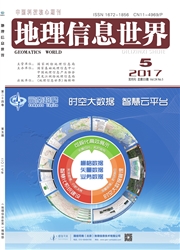

 中文摘要:
中文摘要:
针对贫困区基础教育资源分布中出现的教育资源空间配置不合理等问题,以连片特困区一一武陵山片区的重庆市黔江区为例,以自然村尺度进行测算,重点研究并解决了贫困区教育资源空间布局现状的评估技术,以及两步移动搜寻法在农村贫困山区的关键技术改进和实现,并从供给和需求角度出发评价了教育资源的空间可达性。结果表明两步移动搜寻法适用于评估贫困山区教育资源的空间配置状况和分布情况;研究区教育可达性较高的地区不及需求总数的30%,分布在地形相对平坦,海拔较低的地区,服务范围内的学校多为中心校和实验小学,师资和占地面积优势大,但整体可达性并不理想。为相关部门有效配置教育资源,提出了“跑教”提升师资力量和恢复原有教学点等合理化建议。
 英文摘要:
英文摘要:
This paper is a case study in which data are collected from Qianjiang District in Chongqing city and takes natural village as the research unit to solve assessment techniques of status spatial distribution in poverty district education resources and to improve two-step floating catchment area method and evaluates spatial accessibility of educational resources from supply and demand angles. Results show that: (1) two-step floating catchment area method is suitable for assessing space allocation status in poor mountainous areas of educational resources; (2) the number of higher spatial accessibility of natural villages is less than 30% and those villages distribute in the terrain and lower elevation. The schools owing the best value of spatial accessibility are central primary school and experimental primary school which have a large amount of teachers and areas; (3) enhancing faculty and restoring the original teaching points can be as an important direction for future allocation of educational resources in Qianjiang District.
 同期刊论文项目
同期刊论文项目
 同项目期刊论文
同项目期刊论文
 期刊信息
期刊信息
